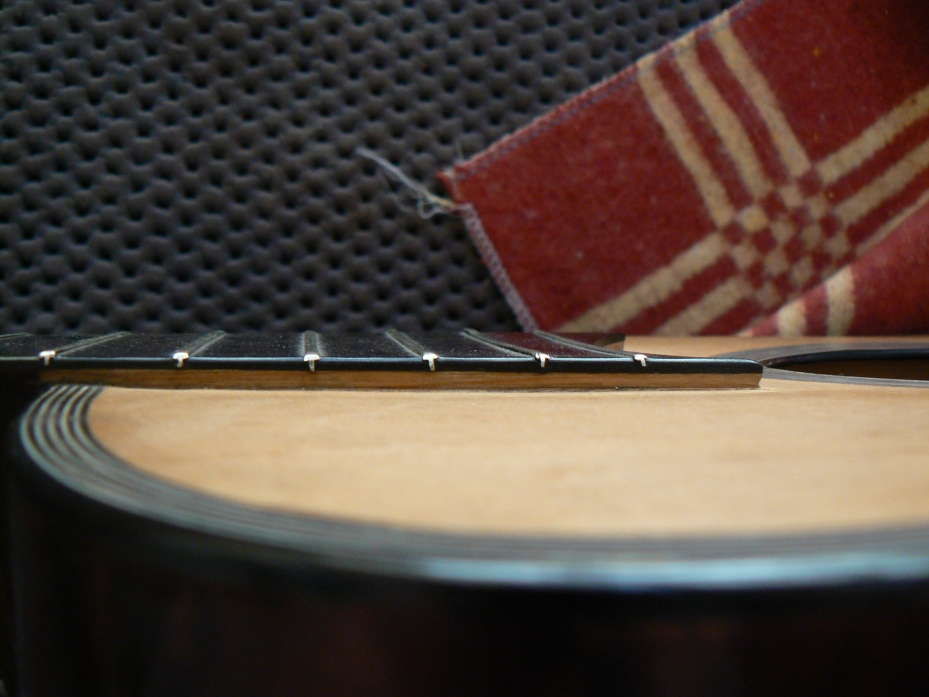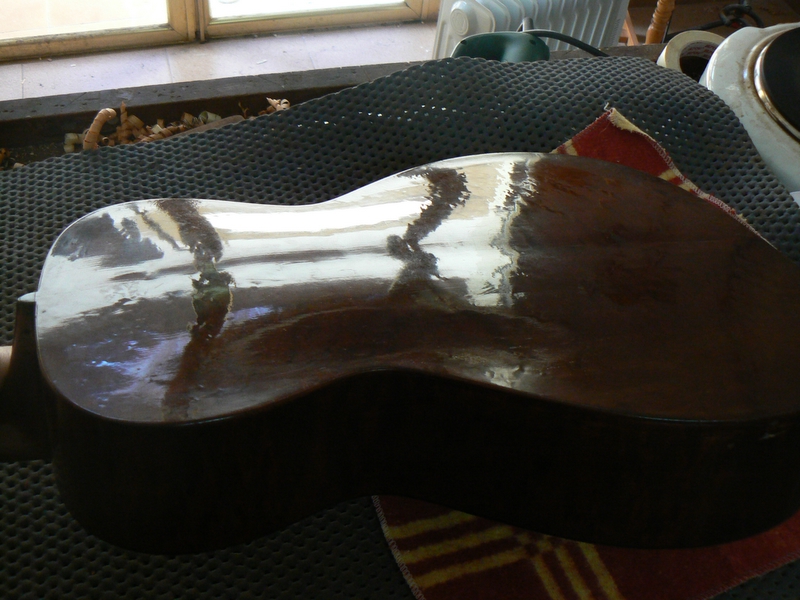I mentioned in my last post (now corrected to read 1838) that the Laprévotte guitar had some modern features. Here is a shot of the bridge showing the 12-holes;  notice the placement of the second hole for the sixth string. This surprised me and made me think that the twelve holes might be a later addition by someone else, however, I found photos of other Laprévottes with the same configuration.
notice the placement of the second hole for the sixth string. This surprised me and made me think that the twelve holes might be a later addition by someone else, however, I found photos of other Laprévottes with the same configuration.  I wouldn’t call this an elevated fingerboard but it could well have given later makers the idea to raise the fretboard. As for the four violin-inspired bars, there is a maker here in Granada who claims to have developed an original system of bracing consisting of exclusively longitudinal bracing. Sorry, anything but original. Carved backs on guitars is perhaps more a feature of antiques than it is of modern heavy back-light top combinations, the violin maker turned guitar maker was quite common back in Laprévotte’s time.
I wouldn’t call this an elevated fingerboard but it could well have given later makers the idea to raise the fretboard. As for the four violin-inspired bars, there is a maker here in Granada who claims to have developed an original system of bracing consisting of exclusively longitudinal bracing. Sorry, anything but original. Carved backs on guitars is perhaps more a feature of antiques than it is of modern heavy back-light top combinations, the violin maker turned guitar maker was quite common back in Laprévotte’s time. 
Some of you may be familiar with Aguado’s tripod, he called it the fixateur and guitars which were made or modified to use it had a hole in the endblock (often plugged by a button) and a hole in the side of the heel. Aguado had at least one Laprévotte (the one in a museum in Madrid is purportedly his) and he is seen playing a very similar one on the cover of his method.
Aguado had at least one Laprévotte (the one in a museum in Madrid is purportedly his) and he is seen playing a very similar one on the cover of his method. Among those whom I contacted about this guitar there are those who suspect that this guitar might have belonged to Aguado. Other great features of this guitar include the invisible neck to head joint and the hidden machine heads, both of which were (first?) used by Lacôte.
Among those whom I contacted about this guitar there are those who suspect that this guitar might have belonged to Aguado. Other great features of this guitar include the invisible neck to head joint and the hidden machine heads, both of which were (first?) used by Lacôte. 
